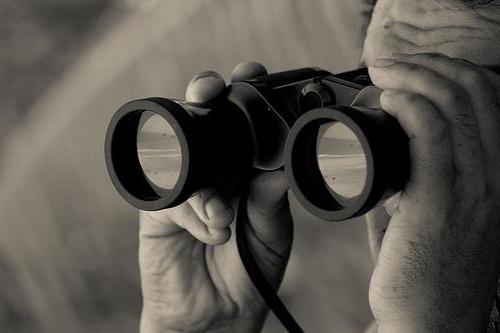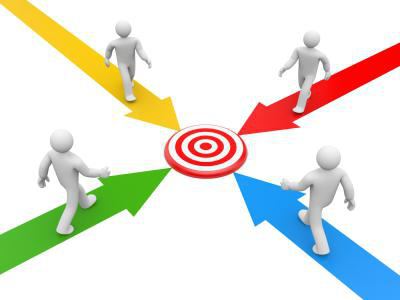In a market economy, competition is a necessary incentive for development. To enter the market, a new company must evaluate its prospects and opportunities. An existing organization regularly conducts competitor monitoring to develop your strategy. To produce a similar process, several different techniques are applied.
Monitoring purpose
Market monitoring (competitors in a particular industry) is made for a specific purpose. It is clearly specified at the beginning of the study. This allows you to collect information purposefully. For this, at the first stage of the work, the analyst determines the circle of the main competitors, as well as the scope of their activity in the market.
The analysis of the main players allows you to accumulate and process information about their strengths and weaknesses, as well as about the direction of development in the future. The real opportunities and existing goals of competitors are evaluated. Such work allows you to increase the efficiency of your company.
Directions
Competitor monitoring may be required to determine your own current or strategic goals. This process is carried out when positioning your own product on the market, forecasting sales.
Also, such actions are performed when developing a new line of goods or services, pursuing a policy of implementation. Based on the data obtained, prices are set, primary characteristics of the goods are selected. This allows you to increase sales revenue and profits.
Features
Competitor Monitoring Service It is a process of collecting, analyzing information about the business environment of a company. At the same time, the behavior of not only competitors, but also consumers, suppliers, dealers, scientific developers, as well as market regulation mechanisms, is considered.
The collection of information on the main subjects of the industry began to develop actively at the end of the last century. The basic principles developed by economists at this time are relevant today. The amount of information that analysts need to process to understand the situation of the business environment has changed. Automation of this process has somewhat simplified the work of the analytical service. However, the human factor for this process remains very important. This allows you to obtain reliable information, increasing the effectiveness of the study and the development of the strategy as a whole.
Problems
In the modern world monitoring competitors on the Internet is becoming widespread. However, a qualitative analysis cannot be based solely on data from various sites and publications. There are several major issues with monitoring. First of all, it is necessary to note a large flow of information. Filtering it becomes difficult.
Also, the quality of monitoring may be affected by the irrelevance of the incoming data, the impossibility of setting its own strategy on the basis of the information received. It comes sometimes in a very detailed or fuzzy form. In some cases, market monitoring cannot reflect the real development processes of the main industry entities. Another negative factor is the closure of important information. Competitors carefully monitor the leak of information on the main strategic areas.
Existing methods for collecting data reduce the impact of negative factors.Its quality is more affected by a lack of understanding of the relationship between the information received and the development of the right strategy.
Management strategy
According to a certain scheme, it is produced in large companies monitoring. Competitor analysis It is produced according to a developed and tested system. Large companies eventually develop their own unique methods for conducting such a process. If the approach developed by the organization to collect data on the business environment is effective, it takes a long time. However, clearly articulating its specific advantages is quite difficult. In the process of carrying out the study, it is important to understand the relationship between the management strategy and the chosen approach to analysis.
The manager conducts the process of setting the strategy in two main stages. At the first stage, the direction of development is formulated, an assessment of their own capabilities is given, and alternatives in the future are analyzed. In this case, goals are set, the mission of the company is determined.
At the second stage, the developed action plan is being implemented. It is the process of monitoring the business environment that allows us to formulate and implement strategic goals. Initially, analysts should establish a data collection process to formulate a promising direction of development. After that, the whole system expands and can be implemented.
Deep Scan
Different goals can pursue monitoring competitors. Program developed taking into account the interests of the company and the characteristics of the market. For a global, thorough analysis, the method of M. Porter is used. It involves collecting data once every 3-5 years. This is a laborious, but quite effective technique. It is divided into five stages.
Initially, the study is carried out in the direction of assessing the advantages and weaknesses of the main market players. At the second stage, their goals and motivation are determined. The third stage involves identifying the current strategies of competitors. It examines its current market position, as well as current actions aimed at increasing profits.
The fourth stage further deepens analytics in the essence of the competitive environment. At this stage, it is necessary to study the player’s understanding of his position in the industry, his satisfaction with his position. At the fifth stage, predicting the actions of players is carried out. This is the most responsible process, which involves the use of all previously obtained information.
Annual analysis
Monitoring of competing companies It should be done not only once every few years. Constant monitoring allows you to respond in a timely manner to changing market trends. A simpler technique is used for this. The study is performed once a year.
During this analysis, a general characteristic of the industry’s competition is given, and its development is forecasted. For this, specialists draw up a special map of the business environment. Direct, key and indirect competitors are indicated. They compare their own range of products, pricing, distribution, image. The channels of product promotion are also analyzed.
During the annual analysis, they study the commitment of consumers, their awareness of the company's products. The technologies used by competitors are compared with their own developments, they do a SWOT analysis. The quality of own resources is estimated. Based on the research, the strengths and weaknesses of their own organization and the main market participants are established.
Information sources
Competitor Monitoring Service involves gathering information from various sources. It is not recommended to use only one direction of data acquisition. In this case, the result of the study may be incomplete or unreliable.
The main sources of information include consumer surveys. The opinions of various target groups are studied qualitatively and quantitatively.Analysts get data from points of sale. Here, the quality of the display of goods, promotions, assortment and prices is determined.
On the Internet you can also get some information about competitors. Interviews with industry experts also provide some insights into the state of the business environment. Getting information from sales managers is also one of the fairly reliable methods. Persons responsible for the promotion of goods in stores can provide complete information about the achievements of competitors.
Industry reviews provide reports on financial performance, ranking companies in the industry. These are key characteristics of the industry’s business environment. Visiting thematic exhibitions, seminars helps to understand the communication strategy of the main market players.
Market signals
Competitor monitoring may use information of varying degrees of certainty. M. Porter introduced the concept of market signals into the management process. It means any action in a business environment that competitors perform. It can indicate directly or indirectly the intentions of a market participant, his internal situation.
Market signals can also be determined by the actions of buyers, suppliers or other participants. Each event gives its resonance in the business environment. Monitoring takes these signals. They are processed, assessed the probability of a certain event and transferred to the company's management for strategic decisions.
Depending on the monitoring objectives, analysts can work with events that have already occurred or consider signals that alert competitors in the future. Large competitors make decisions based on data that no one else has in the industry. This allows you to occupy a large market share before competitors do it.
Price monitoring
Many companies today choose to monitor their prices from a variety of competitor data collection strategies. This allows you to assess the situation on the market. This approach allows identifying participants who seek to increase sales while lowering prices or, conversely, stimulate profits by selling expensive products. Some participants have non-price sales promotion methods. For this, monitoring of competitors' stores and points of sale of their products.
This monitoring involves the consideration of price options when changing the volume of the order (wholesale, retail value), as well as an assessment of stocks. For example, the Rettig group of companies has been operating for over 200 years. The range of its activities includes various areas (from logistics to the production of heaters). Such a diversified structure urgently needs precise definition of strategic issues and business environment trends. For this, a group of companies is constantly studying raw material prices, supply conditions, consumer preferences. Based on price monitoring and other techniques, it is possible to predict future developments.
Scenarios
Wanting to monitor competitors' prices, a company may resort to one of the data collection scenarios. In accordance with the chosen method, the employee will find out the necessary information directly in the store.
Different levels of awareness require a researcher monitoring competitors. Example A similar scenario could be as follows. An employee of the company comes to the competitors store. He announces a desire to make a large order. Based on the average level of knowledge in this area, he will find out information of interest.
Another scenario defines the role of the researcher as an inexperienced customer. This is a less efficient way. It allows you to learn about price, non-price ways to expand a competitor market.
If a researcher turns to a competitor as a competent person, he will be able to find out deeper, more detailed information.
Having examined how it goes competitor monitoring the company can formulate and implement its development strategy, gain a large market share.